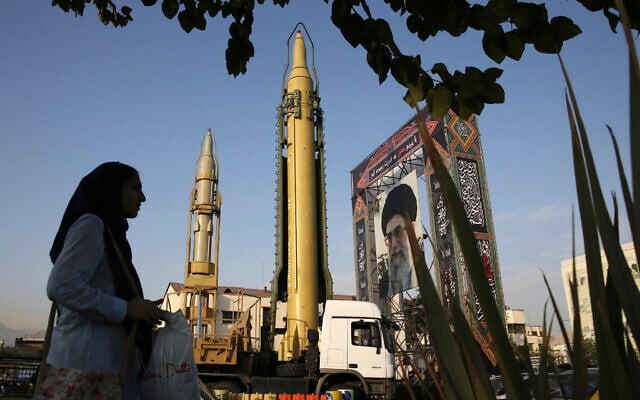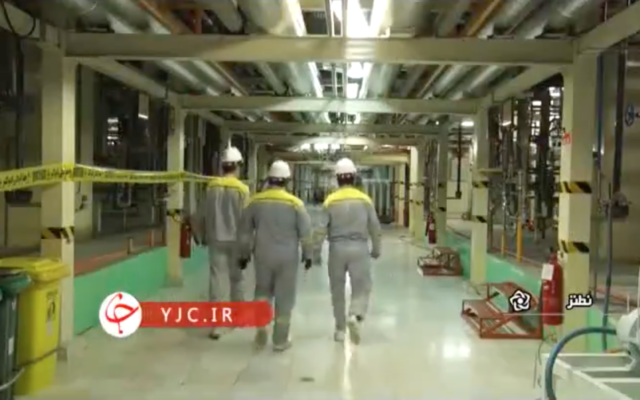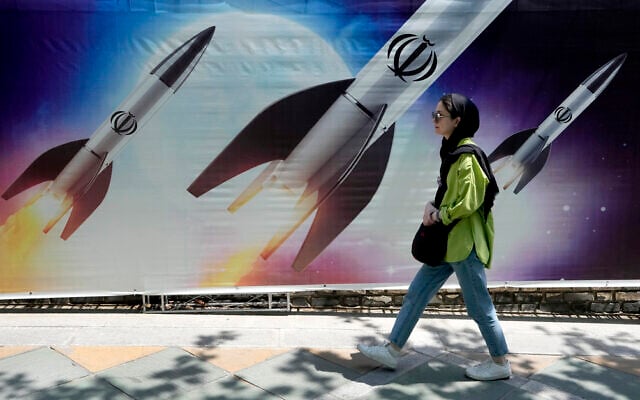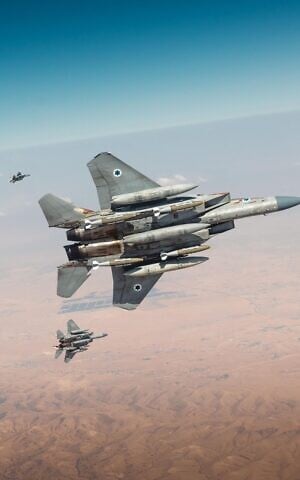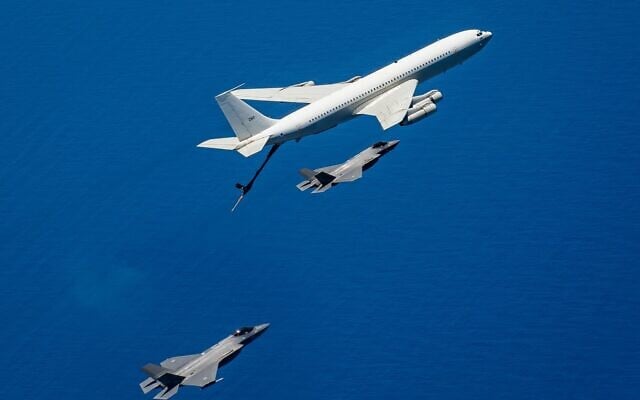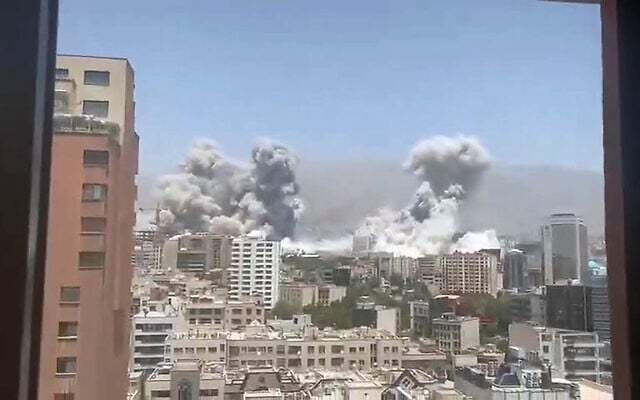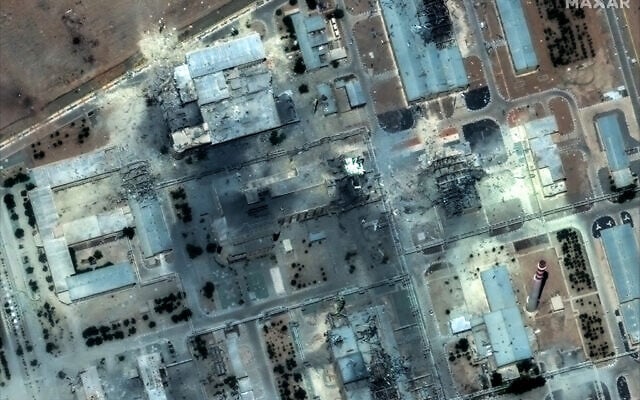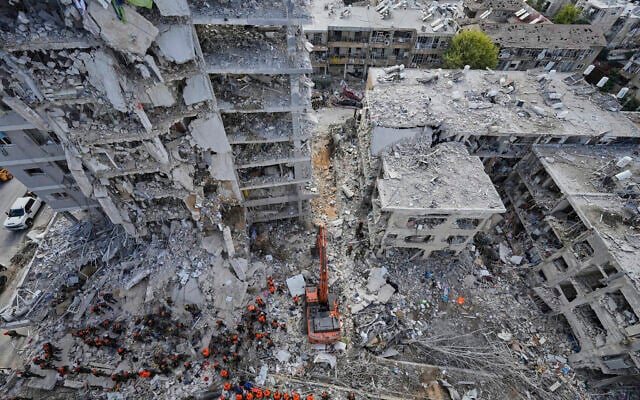



Over the past decades, Israel has come up with numerous different plans to attack Iran’s nuclear program. None of them were activated, nor were they considered ready. Until this month.
In the early hours of June 13, the Israel Defense Forces launched what it dubbed a “preemptive” operation against not just the Iranian nuclear program, but the wider threat of Iran’s ballistic missiles and its overarching plans to destroy Israel.
The war began with surprise strikes carried out by the Israeli Air Force in Tehran and other areas of Iran, some 1,500 kilometers from Israel. The sudden assault was multifaceted.
In what is now known as Operation Narnia, some 30 top Iranian military commanders — including the three most senior generals — were eliminated near-simultaneously in strikes in Tehran, which, according to the IDF, disrupted Iran’s command and control, and prevented it from responding to Israel for nearly a full day.
The commander of Iran’s Islamic Revolutionary Guard Corps’ elite Quds Force, Gen. Esmail Qaani, was among those whom Israel wanted to eliminate, but , he was not targeted that night.
In another effort at the same time, known as Operation Red Wedding, nine senior Iranian nuclear scientists, who, according to Israel, were working on a bomb, were also killed in strikes in the Iranian capital.
The IAF also struck several nuclear facilities, destroyed many of Iran’s air defenses, giving its fighter jets and drones freedom of action, and struck ballistic missile launchers to thwart Iran’s initial response.
All of this occurred within minutes.
Over the following days, the IDF targeted additional Iranian nuclear facilities, eliminated more military commanders and nuclear scientists and continued to work to thwart Iran’s attacks on Israel. The United States later joined on June 22 with its strikes on Iran’s nuclear sites, especially the underground Fordo facility.
The IDF has said that it “fully met, and even exceeded, all the objectives and goals” that it had set out before the operation, which lasted just 12 days.
But why now?
Ahead of the operation, the IDF presented its assessments to Israel’s political echelon, according to which the development of the Iranian threat in all aspects — nuclear, missiles and the plan to destroy Israel — was reaching a “point of no return,” and at the same time, the Israeli military was at “optimal readiness for action.”
In April, a month into his role as chief of staff, Lt. Gen. Eyal Zamir determined that June would be the window of opportunity for the Iran operation. Otherwise, according to the IDF, the opportunity would be missed due to several factors.
Any delay meant that the IDF may not be able to remove these threats at a later date, according to the military. It therefore launched the preemptive operation, known internally as Rising Lion, to “eliminate the existential threat to Israel” — Iran’s nuclear and missile programs.
Israel’s intelligence on the Iranian nuclear program suggested that Iran was “accelerating its progress along the weaponization track,” while continuing to enrich uranium to 60% or higher on a large scale, and was accumulating enough fissile material that could be enriched to weapons-grade for several nuclear bombs “in a short period.”
From the moment a decision was made, it would take Iran at most two months to produce a bomb, according to the Military Intelligence Directorate assessments.
Some of the indications identified by the Intelligence Directorate included a secret plan led by senior Iranian nuclear scientists to create the components necessary for a nuclear weapon.
As part of the plan, covert experiments, research and development were conducted, according to Israeli intelligence reports: “The advancement of the plan brought the Iranian regime very close to the point of being able to produce a nuclear weapon after deciding to do so, and to possessing a capability for mass destruction,” the military said.
The Intelligence Directorate also identified that Iran planned to triple the rate of its ballistic missile production and increase its stockpile from 2,500 to 8,800 within two years.
If Iran had close to 9,000 ballistic missiles, this would pose an existential threat to Israel, the IDF determined. Such a quantity of missiles would cause massive and widespread damage in Israel.
Additionally, the Intelligence Directorate identified that Iran continued to advance its “plan to destroy Israel,” which included a multi-front ground invasion by its regional proxies, alongside a massive ballistic missile attack.
Letting these efforts by Iran continue would make them much harder to combat in the future, according to the IDF.
At the same time, the IDF identified a “strategic window of opportunity” to act against these threats.
This included Israel’s operational and intelligence capabilities reaching a point of maturation and readiness; the collapse of the Iran-led Axis of proxies on Israel’s borders, including Hezbollah in Lebanon, Bashar al-Assad’s regime in Syria, and Hamas in Gaza; and increased coordination with the United States.
The IDF said it exploited the strategic window of opportunity in light of the growing threat from Iran, the deterioration of Iran’s proxies and Israel’s peak readiness to act.
“The stars aligned,” one IDF general said during a recent discussion.
Over the years, the IDF had monitored the developments in Iran and carried out actions, mostly covert, to delay and disrupt the nuclear and missile threat.
After identifying the rising threat, in October, at the height of the fighting with Hezbollah in Lebanon, and after a second missile attack on Israel by Tehran, the IDF accelerated its plan for a campaign against Iran. It based the plans on intelligence gathering and capabilities that had been developed over the years and refined them.
At the end of November during the ground offensive in Lebanon, the Intelligence Directorate and IAF held a joint conference during which they outlined Iran’s “centers of gravity” for the operation: Iranian firepower, air superiority, the nuclear program, force buildup, the Iranian economy, governance and the military industry.
The conclusion after that joint conference was that establishing air superiority was the key.
A joint Intelligence Directorate and IAF team spent months mapping out Iran’s air defense systems, which required cross-referencing thousands of intelligence sources, alongside generating new ones.
By March, the issue was cracked, and intelligence teams began working on creating a target bank based on the identified centers of gravity.
The entire plan was kept compartmentalized and secret within the IDF, enabling the surprise assault.
During the 12 days of war, the IAF said it carried out more than 1,500 sorties in Iran and over 600 aerial refuelings en route.
The IAF struck some 900 targets — including 1,500 separate components — using some 4,300 munitions, after achieving aerial supremacy from western Iran to Tehran and beyond. Of the strikes, 370 were carried out by fighter jets, and the rest by drones.
Despite the air superiority, the IAF lost eight drones during operations in Iran. However, no fighter jets were shot down, contrary to what the military assessed before the operation.
The military said it would rather lose an unmanned drone than risk a ballistic missile attack on Israel’s home front, which killed 28 people during the fighting.
The military said it destroyed 80 Iranian surface-to-air missile systems, out of around 100 in the areas where it was operating, and managed to thwart around 60% of Iran’s ballistic missile fire.
Fighter jets and drones also destroyed some 200 of Iran’s estimated 400 ballistic missile launchers; 15 Iranian aircraft; 70 radars; six airports and air bases; over 35 missile and air defense production facilities; and dozens of command centers.
A series of strikes on Monday in Tehran eliminated an estimated 300 members of the IRGC, mostly members of the Basij internal security force.
The farthest fighter jet strike was carried out at Mashhad Airport, hitting an Iranian refueling plane, approximately 2,400 kilometers from Israeli territory.
The military has assessed that Iran’s nuclear program has been set back years after both its strikes and those carried out by the US hit several uranium enrichment sites and supporting facilities, along with top nuclear scientists.
According to the IDF’s assessments, the Iranian nuclear program has been “significantly damaged” and its ability to potentially enrich uranium at 90% purity has been “neutralized for an extended period.”
Additionally, Iran’s ability to produce a “nuclear core” for a bomb has been “temporarily neutralized.”
Iran’s weaponization efforts were “damaged significantly” through strikes on research and development infrastructure, the elimination of key nuclear scientists, and the loss of documented knowledge, according to the IDF’s assessments.
Israel’s strikes destroyed or badly damaged uranium conversion infrastructure and labs at the Isfahan nuclear facility; an enrichment hall housing centrifuges and other infrastructure at Natanz; and the inactive Arak heavy water reactor.
The IDF’s strikes also damaged “thousands of centrifuges,” according to the military’s assessments, and extensive strikes were also carried out against centrifuge production capabilities, research facilities and other supporting infrastructure.
The US, meanwhile, bombed Iran’s underground Fordo site. The IDF said it had alternative plans for Fordo if the US had not joined Israel in the operation.
Additionally, a total of 12 senior Iranian nuclear scientists, who Israel says were “key knowledge holders in Iran’s weaponization group,” were targeted and killed.
More than 500 ballistic missiles were launched by Iran at Israel, most of which were intercepted, according to the IDF.
There were a total of 36 ballistic missile impacts in populated areas and critical infrastructure sites, including multiple apartment buildings, a power station in southern Israel, an oil refinery in Haifa and a university in central Israel.
Iran also launched 1,100 drones at Israel during the 12 days of war, 99% of which were intercepted or failed to reach Israel’s borders. One drone struck a home in Beit She’an, and another two fell in open areas in northern and southern Israel.
The drones were mostly intercepted by the IAF with fighter jets, helicopters and ground-based air defense systems. The Israeli Navy shot down 30 with missile boats. And the 5114th Spectrum Battalion intercepted dozens with electronic warfare means, according to the military.
To assist with the defensive efforts, the Home Front Command deployed its entire reserve personnel, some 26,000 members, across the country.
A total of 51 Home Front Command battalions were ready to respond to missile impacts, with an average response time of 15 minutes, according to the IDF. Home Front Command search and rescue teams operated at 25 impact sites, the military said.
Despite Iran’s nuclear setbacks, the Israeli military has assessed that “the Iranian threat will continue to accompany us” in the years to come, but the recent operation “removed the existential threat” that was facing Israel.
In the future, Israel would “not allow an existential threat to redevelop in Iran,” the IDF said, adding that “the Iranian regime no longer has immunity.”
The military assessed that it caused “deep damage” to Iran’s ballistic missile production industry.
Iran has lost the ability to produce thousands more missiles by 2027, but still, the IDF assessed that Iran would attempt to recover in the long run.


